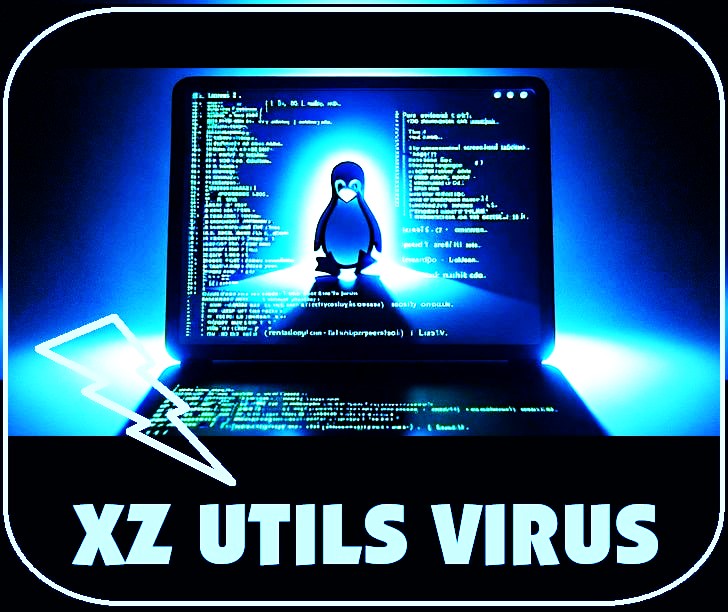XZ Malicious Code Computer Virus
Understanding its Impact on Apple Users
Introduction: In recent times, Apple users have faced an increasing threat from various forms of malware and malicious code. One very recent example is the XZ Malicious Code, a dangerous piece of malware that only was discovered a few days ago. Let’s have a quick overview of the XZ Malicious Code, its impact on Apple users, and the necessary steps users can take to protect themselves from this evolving threat.

Researchers have found a malicious backdoor in a commonly used compression tool that is widely used in Linux distributions, including those from Red Hat and Debian, but also has some impact for Apple users.
The compression utility, known as XZ Utils, had the malicious code introduced in versions 5.6.0 and 5.6.1, according to Andres Freund, the developer who found it. There are no known reports of those versions being included into any alpha production releases for major Linux distributions, but both Red Hat and Debian reported that recently said beta releases used at least one of the infected backdoor versions.
Because the backdoor was found before the many malicious versions of XZ Utils were put into production versions of Linux, “it's not really affecting many in the real world,” Will Dormann, a senior analyst at security firm Analygence, said in an online interview. “BUT that's only because it was discovered early due to bad programming sloppiness. Had it not been discovered, it would have been catastrophic to the world.”
Understanding the XZ Malicious Code
The XZ Malicious Code is a type of code that is used in commonly used utility programs and targets those with that installed. This is primarily Linux but also Apple devices, including iPhones, iPads, and Mac computers. It is designed to exploit vulnerabilities in the operating system and gain unauthorized access to sensitive user information. This malware is typically distributed through these compromised apps.
Effects on Apple Users
Most of the risk for Apple users seems to be through the hugely popular application, HomeBrew. If you have this, you should update immediately. Not only the Homebrew app, but also the Operating System and any Antivirus you run. Once the XZ Malicious Code infects an Apple device, it can have severe consequences for users. Some of the common effects include:
a. Data Breach: The primary objective of the XZ Malicious Code is to steal sensitive user data, such as login credentials, financial information, and personal documents. This stolen information can be used for identity theft, financial fraudulence, or sold on the black market (dark web).
b. Privacy Invasion: The malware allows attackers to gain unauthorized access to the user's camera, microphone, and other sensitive features. This invasion of privacy can lead to blackmail, surveillance, or unauthorized monitoring.
c. System Disruption: The XZ Malicious Code can disrupt the normal functioning of Apple devices, causing crashes, freezes, and slow performance. This can result in data loss, productivity issues, and frustration for users.
Prevention and Protection
To protect themselves from the XZ Malicious Code and similar threats, Apple users can take several proactive measures:
a. Keep Software Updated: Regularly update your Apple devices with the latest software and security patches. These updates include fixes and updates for known vulnerabilities and issues that can be exploited by malware.
b. Exercise Caution with Downloads: Only download apps, files, and attachments from trusted sources, such as the official App Store or reputable websites. Be cautious of clicking on suspicious links or opening email attachments from unknown senders.
c. Enable Two-Factor Authentication: Enable two-factor authentication (2FA) for your Apple ID and other accounts whenever possible. This adds a vital extra layer of security by making the user provide a second form of verification. This can a text to your phone or an authenticator app.
d. Install Antivirus Software: Consider installing reputable antivirus software specifically designed for Apple devices. These programs can detect and remove malware, providing an additional layer of protection.
e. Practice Safe Browsing: Be cautious when visiting websites, especially those that prompt you to download or install software. Stick to reputable websites and avoid clicking on pop-up ads or suspicious links.
f. Regularly Back Up Data: Regularly back up your important data to an external hard drive or cloud storage. In the event of a malware infection or data loss, you can restore your files and minimize the impact.
Conclusion
The XZ Malicious Code poses a significant threat to Apple users, with its ability to steal sensitive data, invade privacy, and disrupt device functionality. By staying vigilant, keeping software updated, and following best practices for online security, users can minimize the risk of falling victim to this malware. It is crucial to prioritize prevention and take proactive steps to protect Apple devices, ensuring a secure and seamless user experience.
Friendly Advice in Plain English.
0800 FIX NOW

